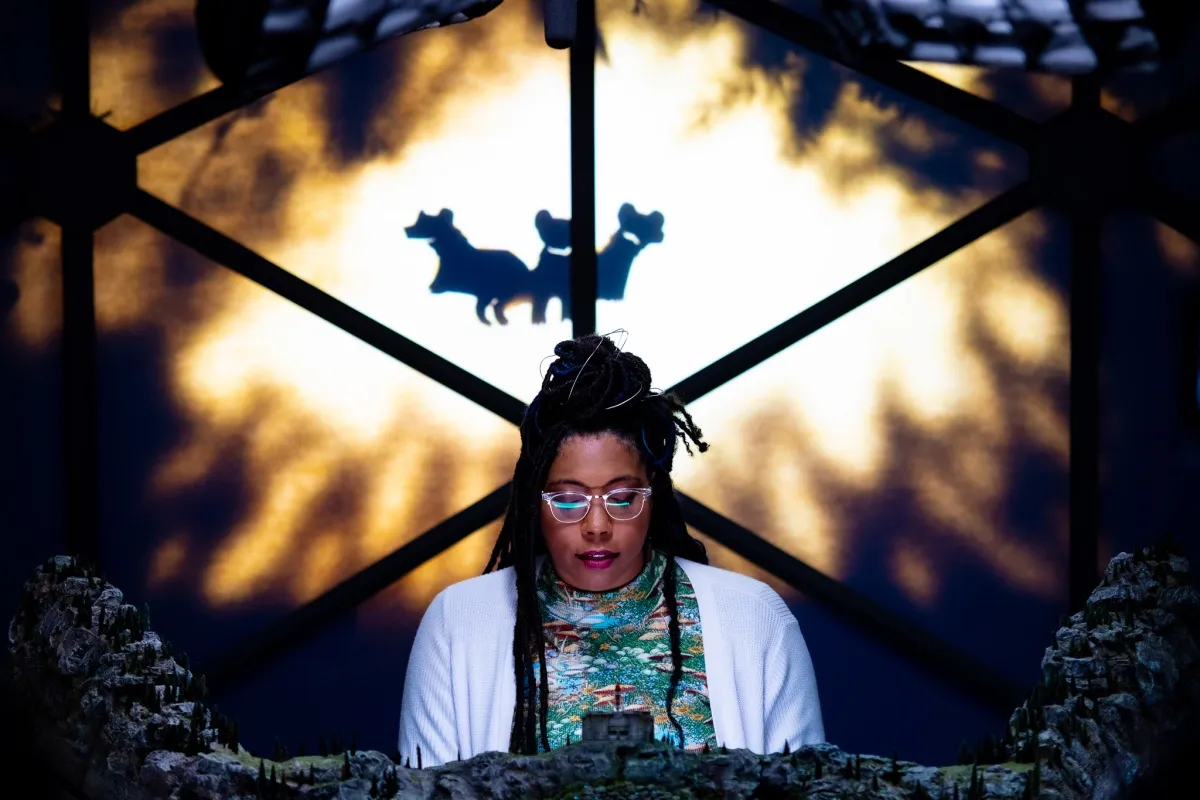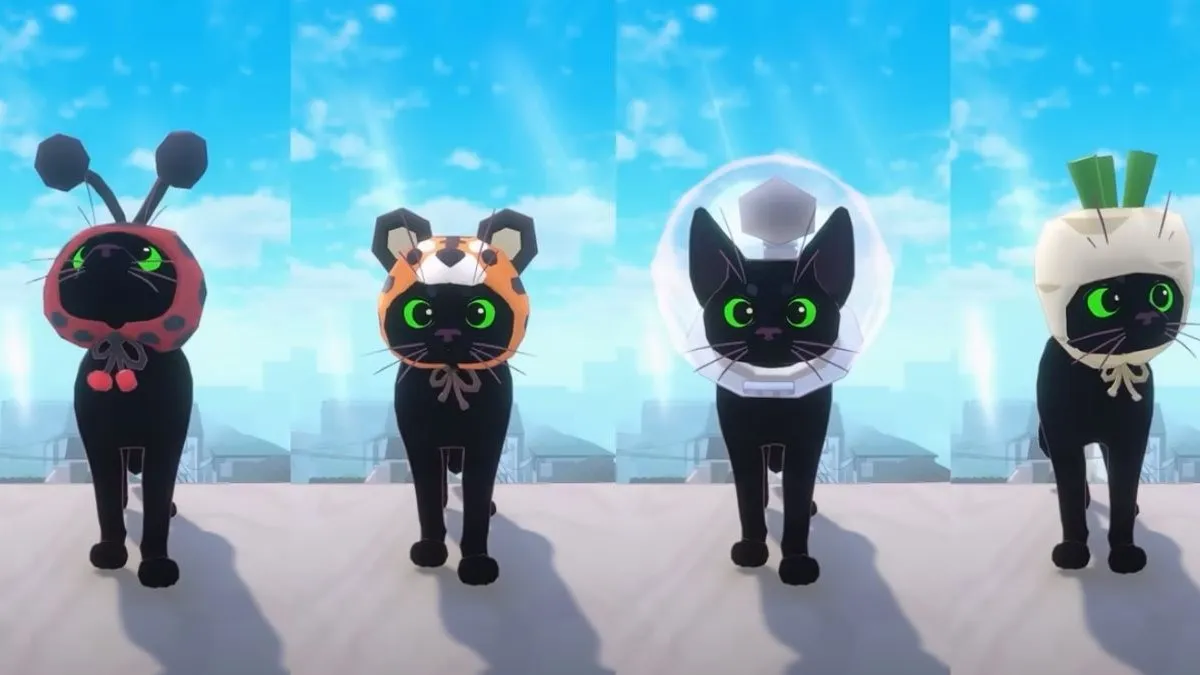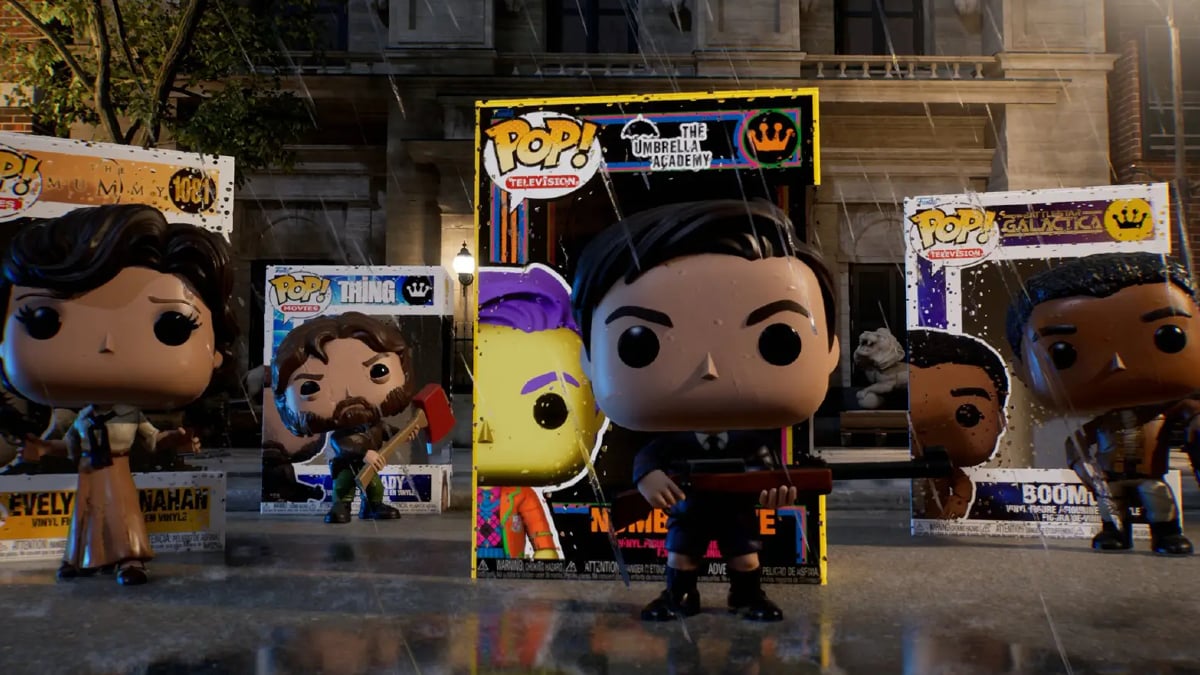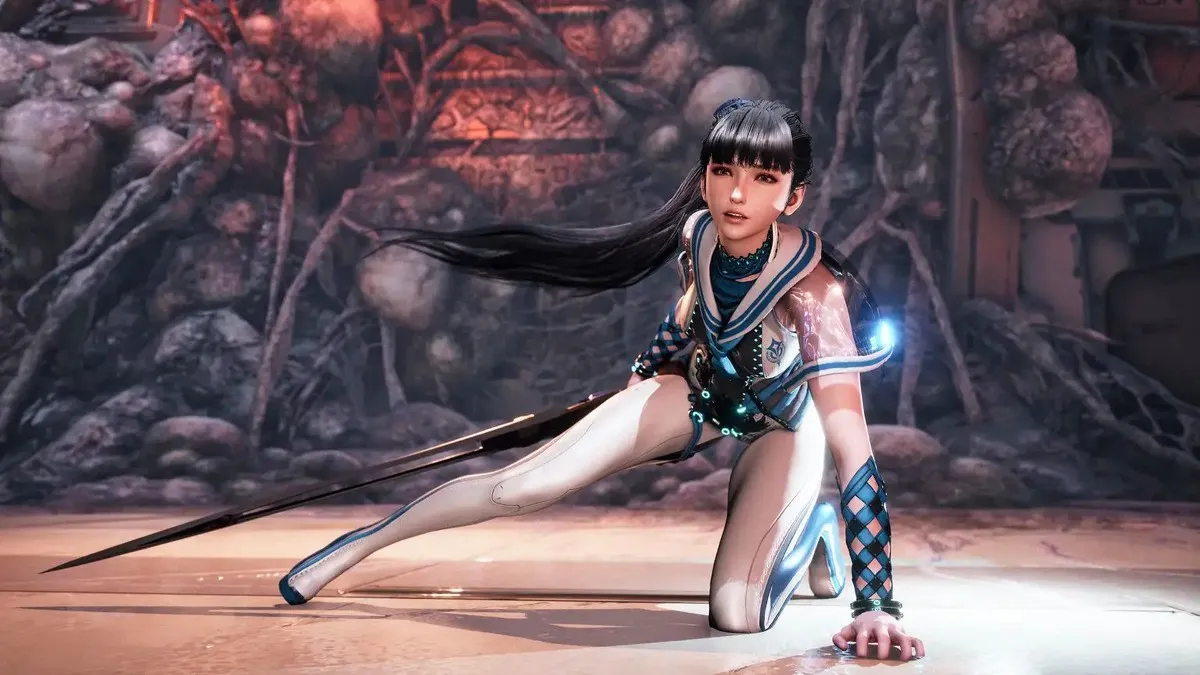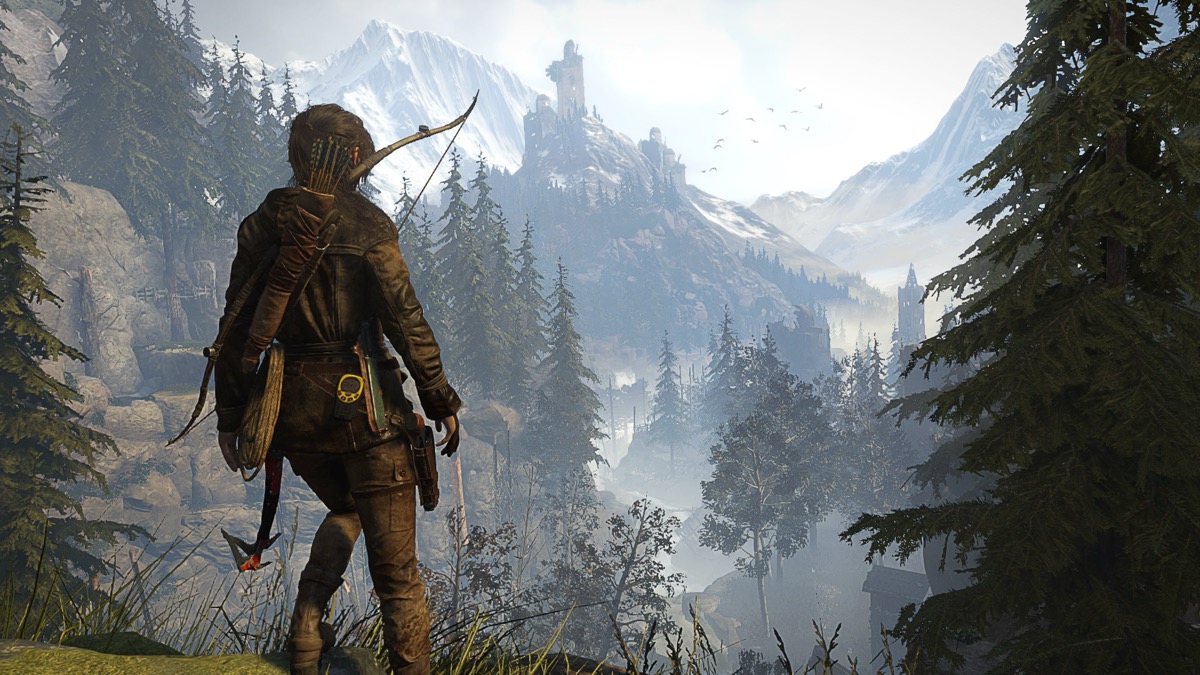Returning to the dome to DM her third season of Dimension 20, Aabria Iyengar served as the fearless warren warden to the stoats of Burrow’s End. Ahead of Wednesday’s finale, The Mary Sue had the chance to chat with Iyengar about bringing the blue-ridden world of Burrow’s End to life.
This interview has been edited for length and clarity. A full-length video version of this interview can be found on YouTube.
Lauren Coates (TMS): In a recent interview, Erika Ishii talked about how 5E as a system encourages and/or rewards players for solving their problems with violence—I think that’s a really cool mirror to the story of Burrow’s End. Can you talk a little bit about why 5E was the right system for this season?
Aabria Iyengar: 100%. Because I love other systems so much, I was like “Ok, if I’m gonna play pure 5E, I want to say something about it.” And the thing that fifth edition does better than most other games is its leveling mechanic—you feel that power creep, you feel that explosive growth. The DNA of fifth edition is the legacy of Western European war gaming, so it looks at everything through the lens of extractivist exploration and violence as a means of stability and control.
So talking about how we can push those themes, every time I leveled the party, I leveled them by two levels—explosive, exponential power growth. Everything you see when you level up are ways to be more effective at violence, whether that’s spells doing more damage or being better at smacking things with a big hammer. Even spells that are pretty social, they’re big compulsion spells. Charm person lets you force your will onto something else. It’s all based in being better at deceiving and controlling and monopolizing the violence of any given encounter.
With that as the DNA of fifth edition, how many times does it take of me telling you you’re better at killing things before every problem becomes a thing you solve with violence? Remember, you’re a stoat—stoats exploit. You took the warren from those rabbits. You are an obligate carnivore, don’t forget that, but now here’s a problem with a really nebulous understanding of who’s right and who’s wrong. There was a lot of intentionality on my end in that I wanted to say something about D&D and how it tells you to solve problems.
TMS: One of the most interesting moments of the season for me was right after the players killed the first stoats, you gave them some pretty significant pushback in the form of Bennett. Why was it important for you in that moment to challenge their motivations and their actions?
Iyengar: When you’re the main characters in a story, it feels a lot like “what we’ve decided on a group not only feels correct for us, but bleeds through and feels true for the world.” The pushback from Bennett and the confusion/fear from Sybil were that minor perspective shift away from the overhead camera that’s watching the stoats through the filter of heroics.
It’s the optics of that from the outside in—something we often don’t think about in DND is how much time has actually passed. You guys rocked up in two days and have destabilized a population. And virtue of the fact that these are two hour episodes—of course you can’t go and poll the public on what they believe to get the fuller picture.
You’ve gotta know everyone else sees when they look at you is drastically different from what you guys see and the perspective that the audience holds. Going back to themes of “Us” versus “Them,” I don’t want you guys to feel bad or walk something back, but there is something here outside of you that has an opinion and a perspective. This world continues to turn whether or not you interact with it.
TMS: Earlier you mentioned the idea of shaping the world around the players. Something that really sticks out to me is how A Court of Fey and Flowers, Fantasy High, and Burrow’s End all use the same system but feel so different. How do you approach bending a system to fit the tone and the world of the story you’re trying to tell?
Iyengar: I think that definitely comes from what the theme of the story is. It becomes a factor of heightening, turning up and turning down different parts of a big crunchy system to make those things sing. In Fantasy High, so much of it is about the inherent humor of people becoming incredibly powerful in a world that prioritizes adventuring, but then still having to deal with all of the social things that come from being a teenager.
Like, what a beautiful way to highlight the highs of mechanics that make you very good at fighting and adventuring, but also social mechanics don’t move in the same way as spells and upcasting as you level. It feels like a fun way to highlight the difference between social progression and combat progression in DND through Fantasy High. And ACOFAF, it’s playing with those social things: “here’s all your combat mechanics, all of you are archfey that can beat the brakes off each other, but that’s not what’s important here,” so social graces and social pressure become the order of the day.
In that same way, going to Burrow’s End, playing with that power creep and the power leveling tells a story about “How do you fear?” “How do you treat problems when you’re afraid?” Do you react with violence or compassion, and what’s incentivized by the mechanics within DND? It’s just a matter of what you spotlight and zoom in on.
TMS: I swear, not all my questions are ACOFAF related, but something you did in that season that you also did here was use of makeup and hair design—Siobhan and Rashawn both had some really fun hair stuff, and you had your anti-surveillance makeup. What was the ideology behind the use of hair and makeup this season?
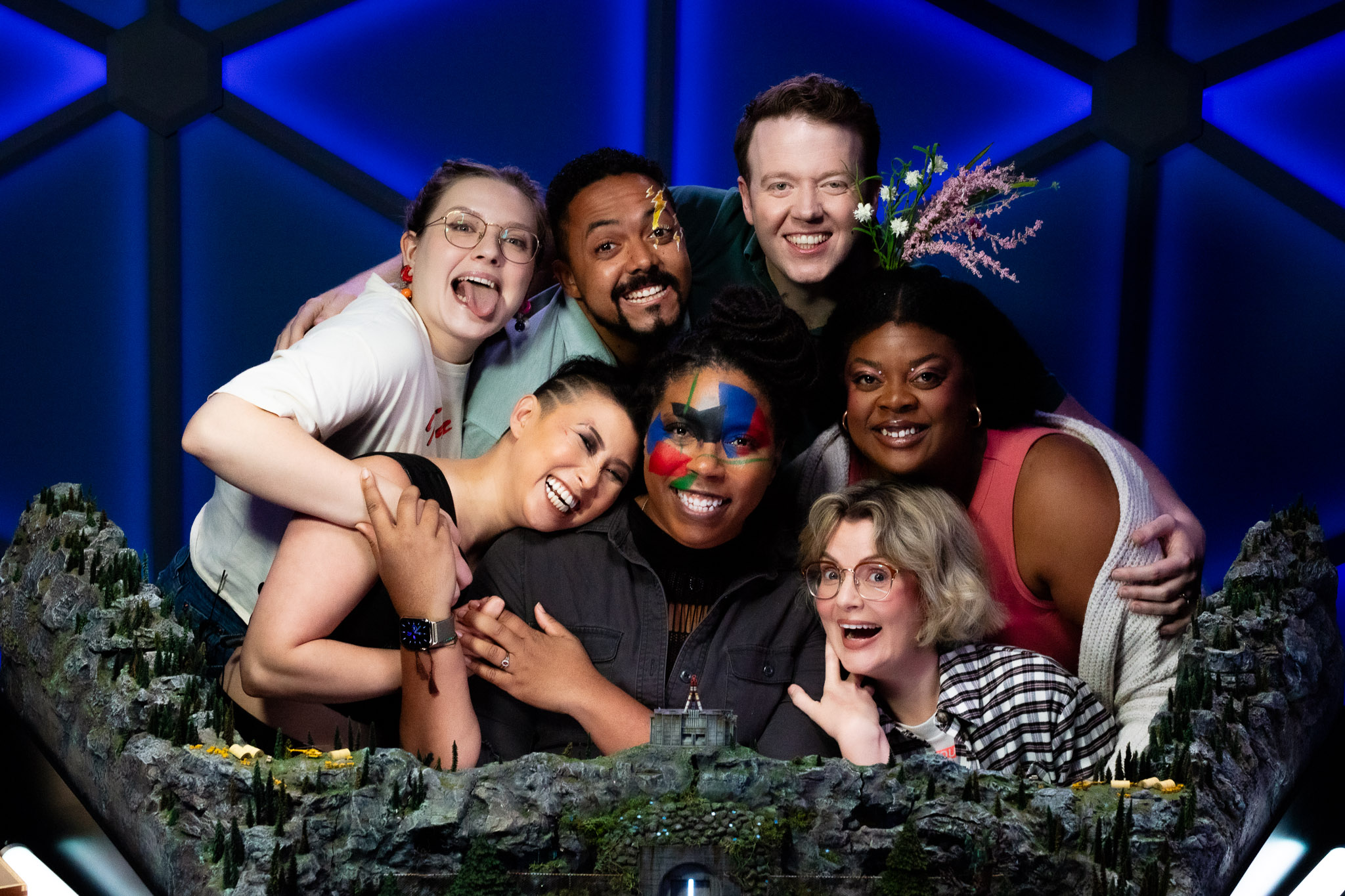
Iyengar: The nitty-gritty of it is that there was a pretty truncated shooting cycle, there wasn’t always time to go as big and wide with the looks as we did for ACOFAF. The moment they get to The Last Bast, I need them to worry about the society immediately (despite being given food and shelter immediately no questions asked) and wonder about what the nature of this place is. So it became boiler suit. Every day. As a GM, I talk more than anyone else there, so there camera will be on me—so what storytellin can we talk about? Doing the slow creep of anti-surveillance makeup was intended to be a part of the mild distress and distance put between the Last Bast and the table. That makeup is strange—what are you trying to hide from? What don’t you want to be seen doing?
TMS: It’s so amazing to see new players get so impacted by the level of emotionality at the table—every time Rashawn cried, I cried. What was it about Rashawn and Jasper that made them the right fit for this season specifically?
Iyengar: We [Jasper and Aabria] had been friends for a while, and I was like “God, if I could find a project that could get you to cross the pond, I would do it in a heartbeat.” You can write about world and themes and things you want to do in advance, but the story doesn’t really happen until you talk to the players and figure out what they want to do, given the elevator pitch of a theme and a world.
Even before I knew as much about the story was going to be, I knew I wanted Jasper—he’s so fun and thought and can live inside of a character just so immediately. He immediately dropped into Thorn from the funniest pitch of a reluctant cult leader on the Zoom session zero, he had such a fun idea and he’s such a good storyteller on any side of the table that he can make that connection with the table and the audience, even if he’s not blood related to the group.
With Rashawn, I had been such a fan of so much of her on Dropout, I was like “She’s brilliant, she’s a storyteller.” As we started researching, I saw she’s on a monster of the week podcast, so I knew she understood RPGs—even if I have to sit down and teach the rules, if you’re a good storyteller, you can tell a story inside of anything. You talk about “perfect for the story,” this story is perfect for them, because it’s what they wanted it to be. It’s built around their love and focus and priorities. This story could have never not had them—the story is everything that it is because they were a part of it.
(featured images: Dropout)



